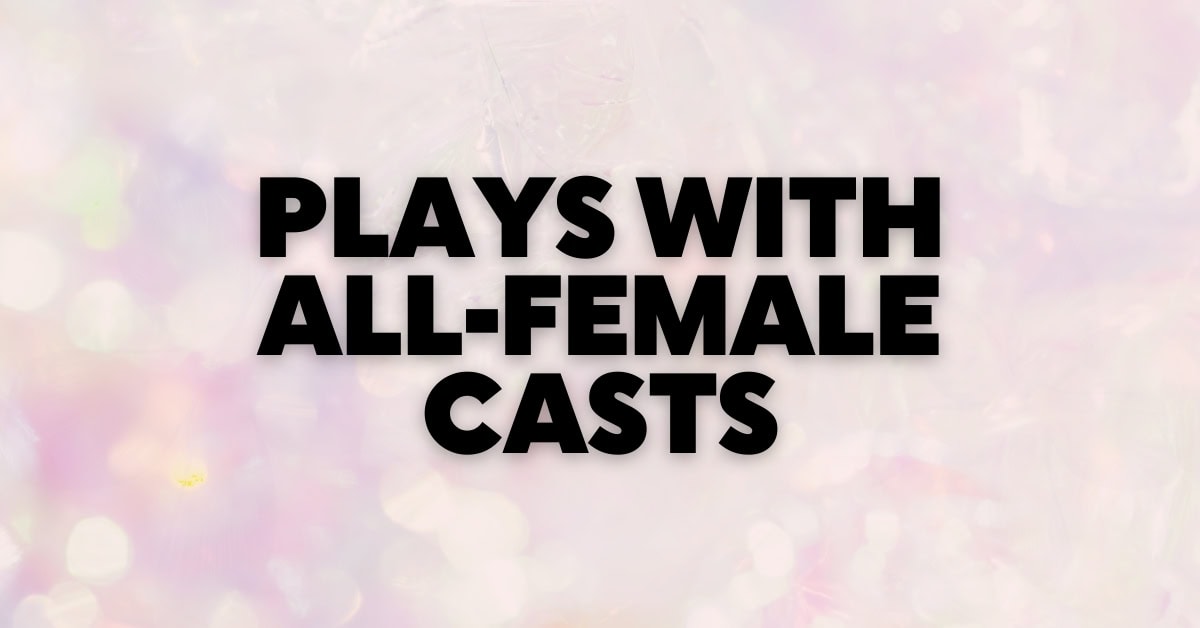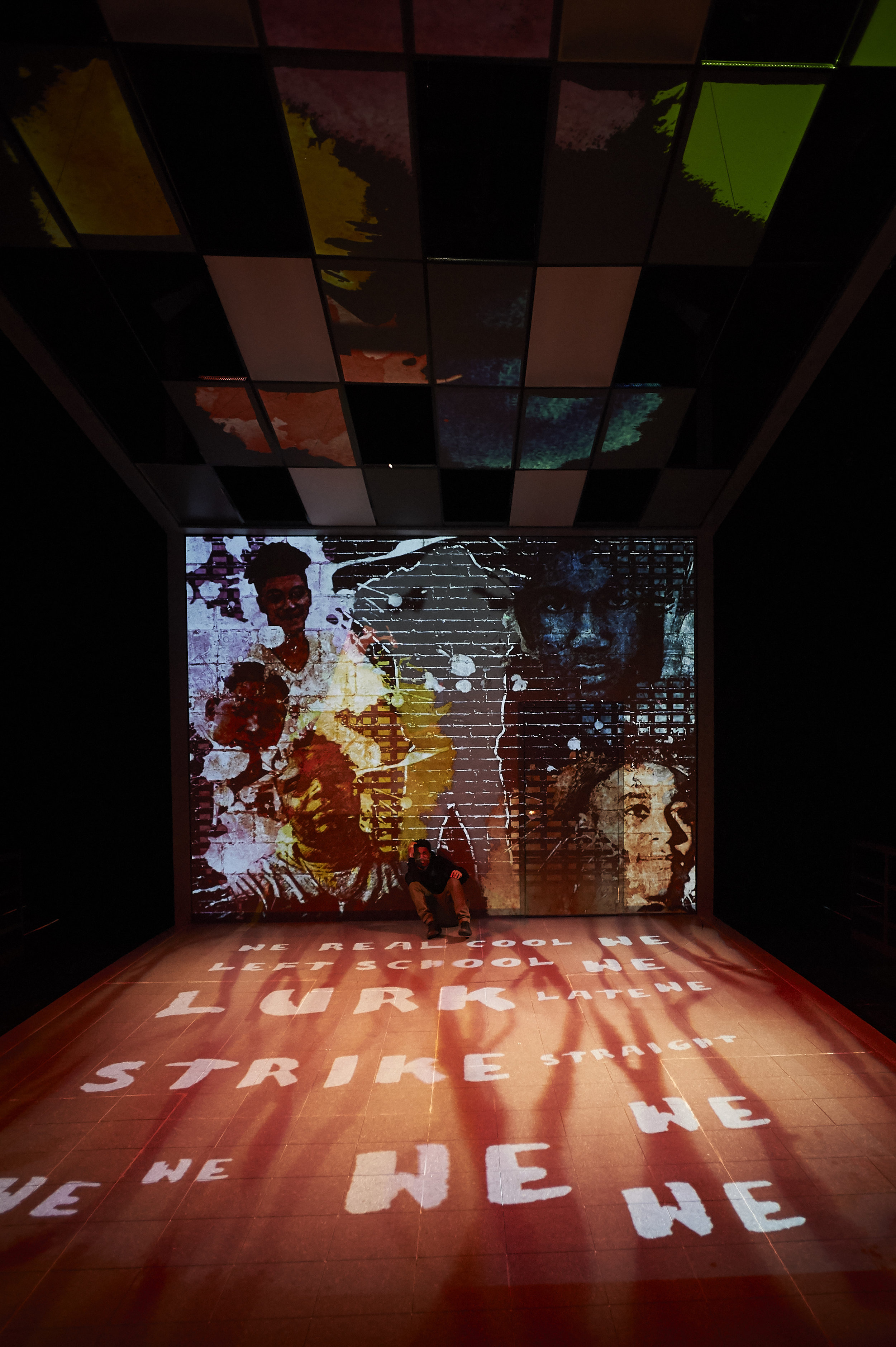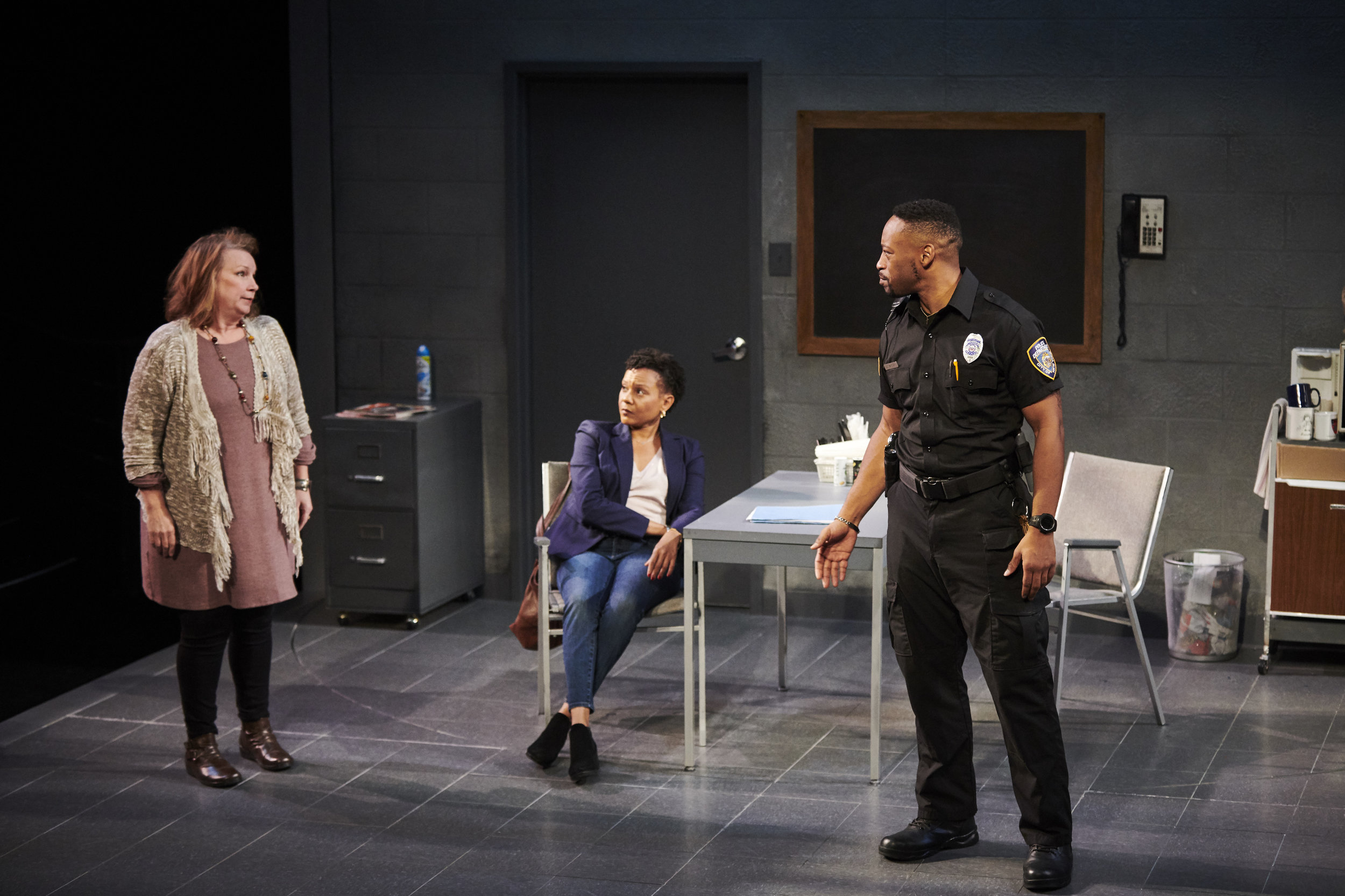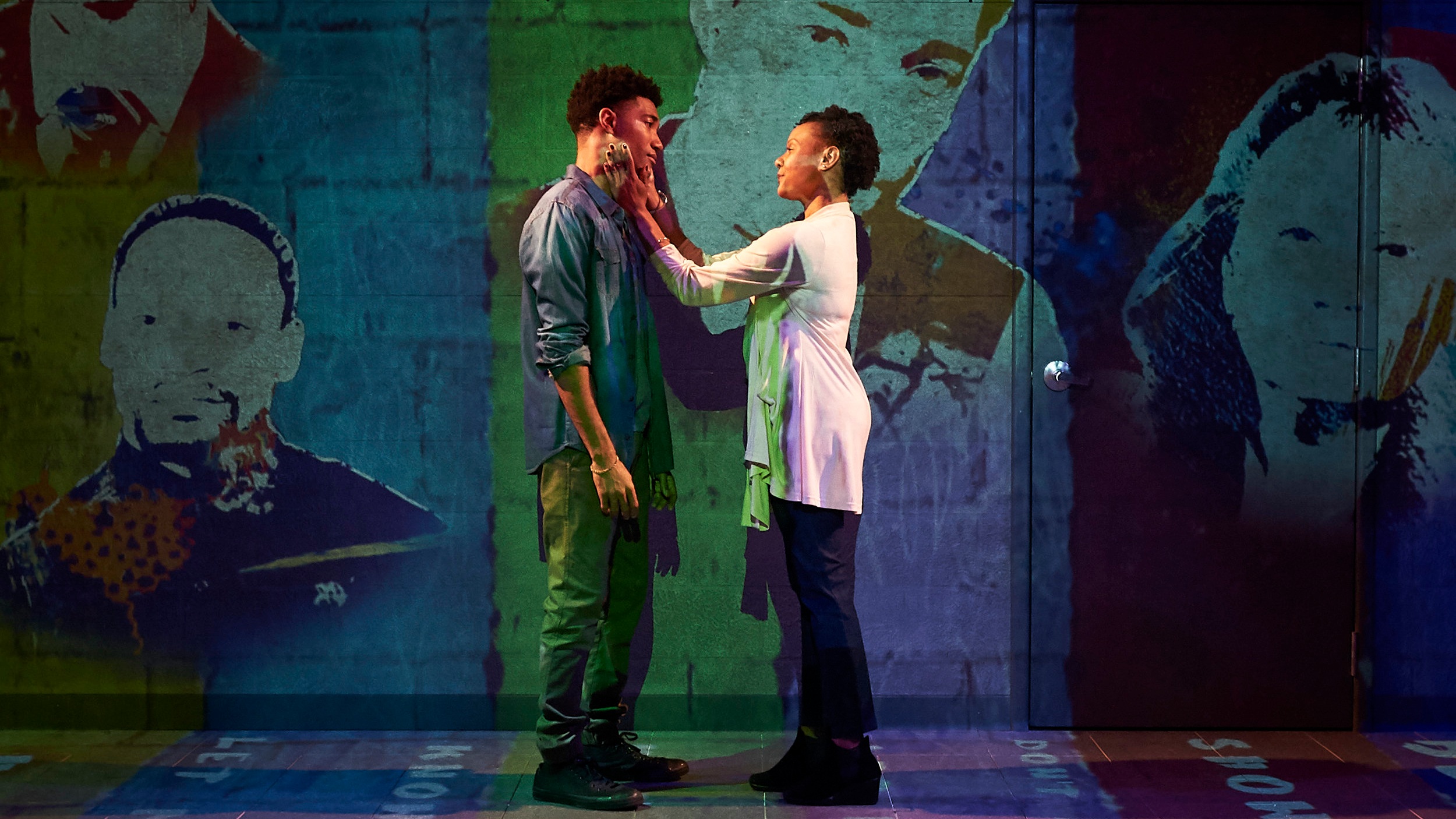
In her play Pipeline acclaimed playwright Dominique Morisseau, explores the inequalities of America’s education system through the eyes of an African-American family. A gripping drama, the play’s subject matter is ideal for launching community conversations. In service of this, City Theatre Company in Pittsburgh sought to ensure that audience for the theater’s production reflected the diversity of characters on stage. How was that accomplished? The answer is both simple and hugely complex. We allowed every person involved with this production to have a sense of ownership. We allowed other voices to be heard, usually without knowing what they were going to say. Below you will hear from three of the many people who came together to make Pipeline a success: Reginald L. Douglas – Artistic Producer and Director of Pipeline, Clare Drobot – Director of New Play Development, and Kristen Link – Director of Education and Accessibility.
Why was Pipeline chosen to be part of the season at City Theatre?
RD: Clare and I saw the world premiere production of the play at Lincoln Center in the summer of 2017. We are both friends with the playwright and in love with Dominique’s work. I was completely blown away by it. I so appreciated the honesty of the relationships and circumstances and experiences that Dominique was sharing.
CD: Walking out of the theater that night, we turned to each other and said this is a show for City. Dominique’s language is so prescient and poetic and the script plays with form in a compelling way.
RD: Pipeline is a wonderfully courageous examination of race, education, love, legacy, and America. The play centers on a relationship between a Black son and his mother, the hopes and fears that she has as he grows up. I really identify with that story – growing up surrounded by love in my household and family, but still often feeling at a loss as to how to best fit into this culture and this country where love feels denied for Black men in particular. Given the cultural assumptions about black male identity being rooted in anger and rage – which is not true – how does one find joy and hope in a society that is set up to only frame black men in terms of pain and loss? That is a question I am always interested in using art to investigate, as well as what are the limits of love? Are there any? I feel like Pipeline is an interrogation of these questions. In the midst or in spite of both our country’s complicated history and present relationship with race, the play shows how love can still survive and thrive. That theatrical investigation felt spot-on to the work that City Theatre produces.
CD: While the play is set in New York, the lens with which it looks at the school to prison pipeline and specifically how our education system treats young men of color, deeply applies to Pittsburgh. We talk a lot in the office about plays that feel urgent; and that’s exactly what Pipeline does. It’s also a piece that really lends itself to engaging an audience in dialogue. We believed it could bring people together like the best of theater can and it did.
Left: Carter Redwood in Pipeline
If we had to choose one word to describe the success of this production, that word would have to be partnerships. The partnerships began with 1Hood Media Academy. 1Hood Media is a Pittsburgh-based collective of socially conscious artists and activists who utilize art as a means of raising awareness about social justice matters affecting people around the world. They were a perfect fit. 1Hood wrote and produced an entire album of songs that were inspired by the script and used in the production.
How did the partnership with 1Hood come about?
RD: I knew early on that I wanted to use 1Hood’s music in the show. They were one of the first organizations that I encountered when I moved to Pittsburgh and I instantly became a big fan. It was a dream come true working with them on this production. Their artistry, feedback, thoughts, and ideas were vital to every step of the production process for me, and ultimately for the whole creative team including our sound designer Zachary Beattie-Brown.
The collaboration with 1Hood has transformed how City Theatre thinks about being a community leader and community connector going forward. I think all of our staff echoes the desire to continue to connect meaningfully with local artists and to provide space for them to tell their stories and share their work on our stages in new and exciting ways.
1Hood was not the only community partner on this show. City Theatre also partnered with ACLU, Shuman Juvenile Detention Center, Point Park University, Carnegie Mellon University, the Education Law Center, Westinghouse High School, BOOM Concepts, and over 20 Black, female community leaders in Pittsburgh who facilitated post show discussions. Each of these partnerships brought a unique voice to the production and the audience. One audience member commented, “I appreciated how the play opened my vision to the experience of other people but also spoke to my own experience. The production was terrific as well and it was especially thrilled to see an incredibly diverse audience. You guys are really doing things right.” Another audience member agreed, “I read about the outreach and community partnership efforts that accompanied this play, including the terrific original music. I was so inspired to see the composition of the audience seeming to diversify, presumable partly because of the partners you’re choosing. Bravo – we should see the whole city onstage at City Theatre, and in the audience. The arts are for all of us!” Collaborating with over 40 individuals and organizations did come with some challenges, including the amount of staff time it took to communicate and coordinate with everyone involved.
What are the challenges of so many partnerships in a production?
CD: The key to successful collaborations is staff and partner buy-in. While there’s a certain amount of administrative overhead to make any collaboration succeed , if you can find a way to allocate the hours (in City’s case we were able to hire a part-time audience and community engagement coordinator to help support initiatives like this throughout the season) the relationships pay dividends. It’s a way for an organization to live out its core values and the biggest challenge is keeping organized and providing clear, concise communication to ensure every partnership is mutually beneficial.
When was it decided to add conversation hosts? How did you choose who to ask? What do you think this added to the play?
CD: The idea to have a post-show discussion following every performance was something we discussed almost as soon as the play was selected for the season. It ties back to that idea of urgency and a deep seated belief that theater can be used to foster dialogue. As Reg refined his vision for the production, he did something few directors do and incorporated the conversations into the production itself. It became a seamless transition that was teched into the show.
RD: That decision – to make the post-show conversation a part of the show – was a big defining moment for the production. It really centered the why of the production on engaging diverse audience members in safe, open conversation with one another, led by local community members who reflected the protagonist of the play. The play and its themes were able to really come to life in an even more personal way for audiences.
CD: We turned the stage over to a different Black female community leader each night. We were able to work with women from a variety of fields—education, the arts, local government, advocacy, and really make them a part of the production’s creative team. It gave all these new voices a sense of ownership over the production and that was so important. We were also very careful to call these conversations—it removed some of the formality from the idea of a traditional ‘talkback’ and was acknowledged as a moment of collective breath at the end of the performance. The conversations really became a form of emotional release—some of the discussions were tense, but the best of them allowed audience members to connect to feel heard, seen, and possibly see the world from a different perspective.
RD: I hope and think that the conversations showed audiences that this story is a Pittsburgh story. I hope that they inspired a dialogue between people who are normally not talking to each other. The ultimate goal of these conversations was to foster empathy and unity, and the moments of that happening were truly profound to witness. Honestly, one of the most inspiring things of my career at City has been to witness long-time subscribers, first-time theatergoers, young people, old people, people of diverse nationalities and neighborhoods being courageous enough to share their experience of the play and what’s happening in our city and our country. It really felt like a community coming together to think, engage, live differently and I could not be prouder to have been a part of fostering that dialogue and spirit.
Pictured: Sheila McKenna, Nambi E. Kelley and Gabriel Lawrence in Pipeline. Photo by Kristi Jan Hoover
There is a lot of talk about diversifying audiences in the theatre world right now. What do you think it takes to make our audience look like our art?
KL: Simply put, representation matters. And of course I mean representation in regards to the stories being told on stage, but just as important is WHO is getting to tell those stories. I think we naturally think about the subject matter on stage as needing to be diverse, and perhaps the actors performing it. We think less about diversity, though, in a holistic sense across the industry. From the backstage, to the front of house, to the administrative offices, to the audience, how do we make theater look like the world that we live in? All of those people are valuable stakeholders in creating the art, too. I believe that once those rooms also become transformed, we will begin to see the commitment to true inclusion and equity. It takes time for this to happen, but once it does, I think we will see more permanent shift in our audience makeup that feels less show-specific and more organically communal.
RD: That’s right. The work has to continue and we are committed as an organization to allowing dialogue and audience building to remain essential to artistic and commercial success. We want ticket buyers, sure, but we also want the audience to have the right ticket buyers in the house, too. I think that’s the goal for many artists – to use art to create deeper understanding and connection – and it was certainly the goal of this production and of the continuing work that we are doing at City Theatre.
Pipeline began previews on October 27, opened November 2, and closed on November 18 to a sold out weekend. Going forward the theater’s next goal is to retain new audience members throughout the season and to continue making steps towards a theatre community that looks like the world around us.
For more information about City Theatre visit us online at CityTheatreCompany.org. We love connecting with different organizations both near and far; please do not hesitate to reach out to continue this important dialogue.
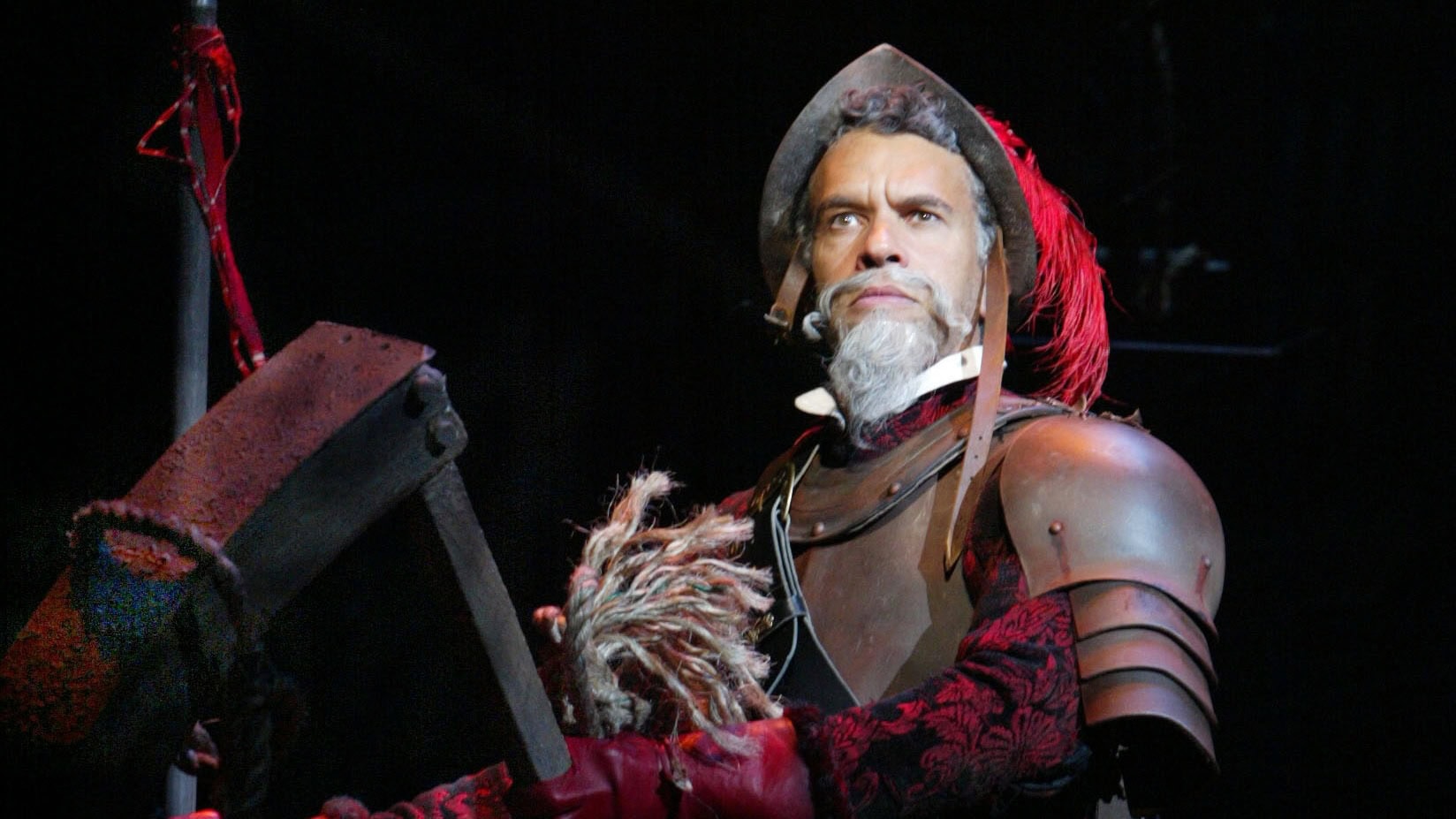
“The Impossible Dream” – An Anthem of Hope

In the Spirit: Plays and Musicals Based on A Christmas Carol
